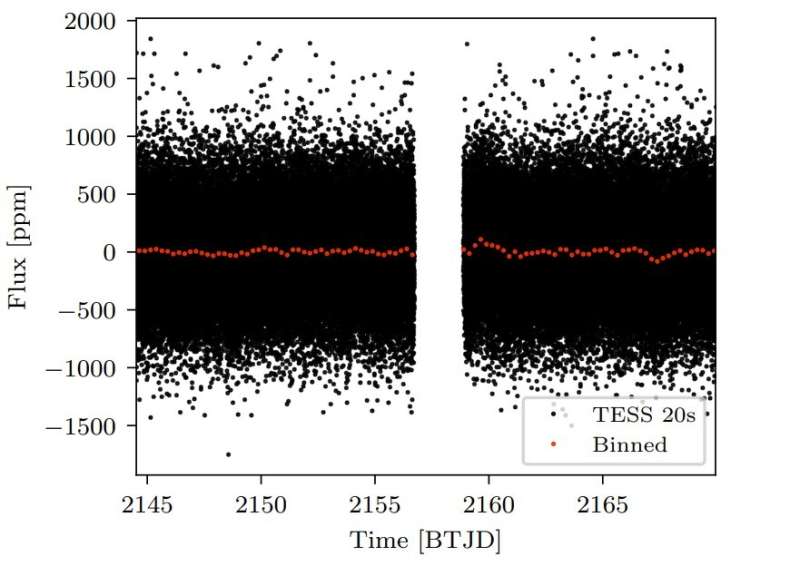February 7, 2023 report
This article has been reviewed according to Science X's editorial process and policies. Editors have highlighted the following attributes while ensuring the content's credibility:
fact-checked
preprint
trusted source
proofread
JWST observations shed more light on the properties of a nearby brown dwarf

Using NASA's James Webb Space Telescope (JWST), astronomers have observed a nearby brown dwarf known as HD 19467 B. Results of the observational campaign, published January 26 on the arXiv pre-print server, yield important insights into the properties of this substellar object.
Brown dwarfs are intermediate objects between planets and stars. Astronomers generally agree that they are substellar objects occupying the mass range between 13 and 80 Jupiter masses. One subclass of brown dwarfs (with effective temperatures between 500 and 1,500 K) is known as T dwarfs, and represents the coolest and least luminous substellar objects so far detected.
Studies of T dwarfs could help astronomers better understand objects near the disputed planet/star boundary, for instance, giant exoplanets. However, although many brown dwarf have been detected to date, T dwarfs are not so common, as only about 400 such objects have been identified.
At a distance of some 100 light years from the Earth, HD 19467 B is a late T dwarf with a surface temperature of about 1,000 K. It orbits HD 19467—a sun-like star of spectral type G3V, estimated to be between 5.4 and 12 billion years old. The star's effective temperature was measured to be approximately 5,750 K.
A team of astronomers led by Alexandra Z. Greenbaum of the California Institute of Technology (Caltech) used JWST to perform medium/narrow band imaging and photometry of HD 19467 and its companion, hoping to unveil fundamental parameters of the brown dwarf. The study was complemented by data from NASA's Transiting Exoplanet Survey Satellite (TESS).
"We observed HD 19467 B with JWST's NIRCam in six filters spanning 2.5–4.6 µm with the Long Wavelength Bar coronagraph.... JWST observations of the G3V star HD 19467 with its T5+ brown dwarf companion, HD 19467 B, represent one of the earliest exercises of the NIRCam Coronagraphic LW Bar, providing an opportunity for an early scientific result and a demonstration of the capabilities of the instrument," the researchers wrote in the paper.
The observations allowed the team to constrain the properties of HD 19467, particularly its age. The results suggest that the host star is approximately 9.4 billion years old. The star's radius was measured to be about 1.2 solar radii, while its mass was estimated to be some 0.96 solar masses.
According to the study, the dynamical mass of the brown dwarf was calculated to be at a level of 81 Jupiter masses and its model-derived mass was estimated to be 62 Jupiter masses. The researchers noted that the radius of HD 19467 B is at a level of 0.62 Jupiter radii and that its surface temperature is approximately 10,800 K.
Greenbaum's team plans further JWST observations of HD 19467 B, later this year, with the main aim of characterizing the atmosphere of this brown dwarf.
More information: Alexandra Z. Greenbaum et al, First Observations of the Brown Dwarf HD 19467 B with JWST, arXiv (2023). DOI: 10.48550/arxiv.2301.11455
Journal information: arXiv
© 2023 Science X Network


















